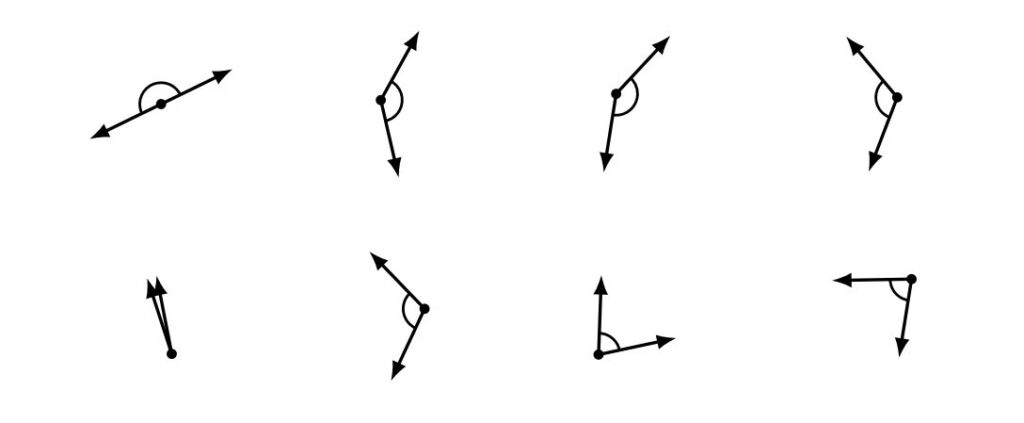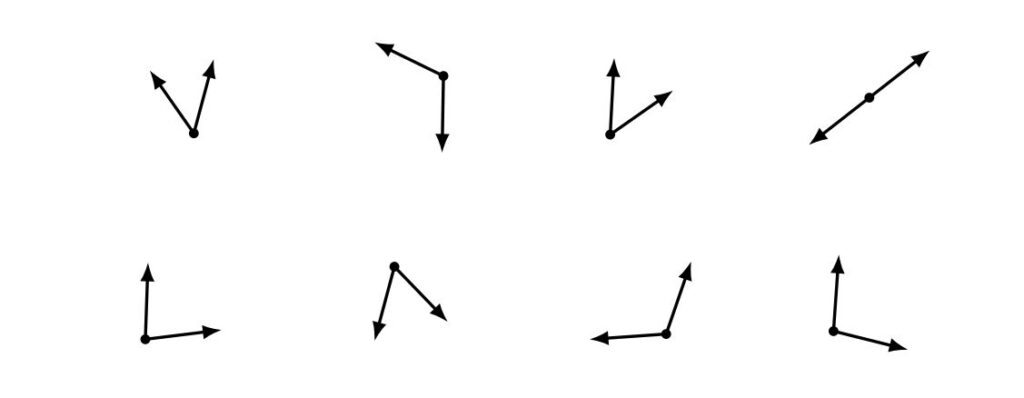Lines, Segments and Rays
In elementary math, lines generally come in three types: line segments, rays and lines. It is important for students to recognize the visual cues, such as arrows and points, that will tell them the type of line they are looking at. A revised version of the identifying lines, segments and rays worksheet was recently added to Math-Drills. The lines, segments and rays point in random directions, so students have to look at the elements to determine the type.

Angle Types
Angles can be classified into six different types. Acute angles are greater than 0 degrees but less than 90 degrees. Right angles are exactly 90 degrees. Obtuse angles are greater than 90 degrees but less than 180 degrees. Straight angles are exactly 180 degrees. Reflex angles are greater than 180 degrees but less than 360 degrees. Complete/Full angles are exactly 360 degrees. The identifying angles worksheets on Math-Drills were also revised and expanded.
Worksheets for identifying angles can help students build visual and spatial understanding of the different types of angles. Students might initially apply tools such as the corners of rulers, straight edges and protractors to help them; however, it is likely they will quickly become proficient at identifying the different types of angles at a glance.

Because identifying lines and angles worksheets don’t require the use of any measuring tools, the diagrams were made smaller than the old worksheets, so more questions could be fit onto one page. In this case, there are 20 questions on each worksheet version.
The identifying angles worksheets have options for diagrams with angle marks and those without. The angle marks can give away the answer, especially with right angles since they are square rather than round. Without the angle marks, students have to rely more on their visual assessment of the angle shown rather than focusing on the angle mark. There are no really close calls, for example there are no acute angles over 85 degrees to allow a buffer between them and right angles. With worksheets that include angles over 180 degrees, angle marks are always included; otherwise you couldn’t tell the difference between a reflex angle and an acute/obtuse/right angle.


